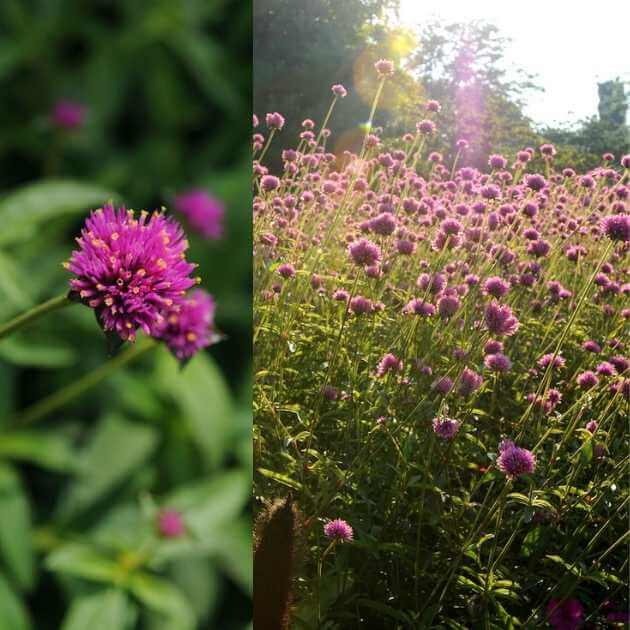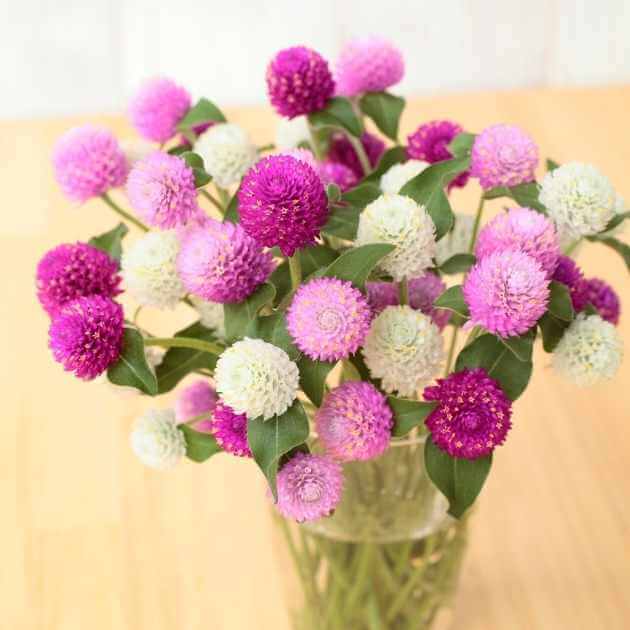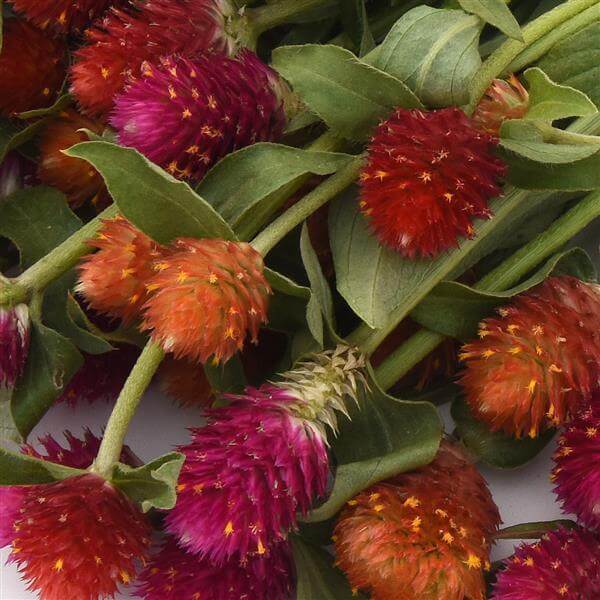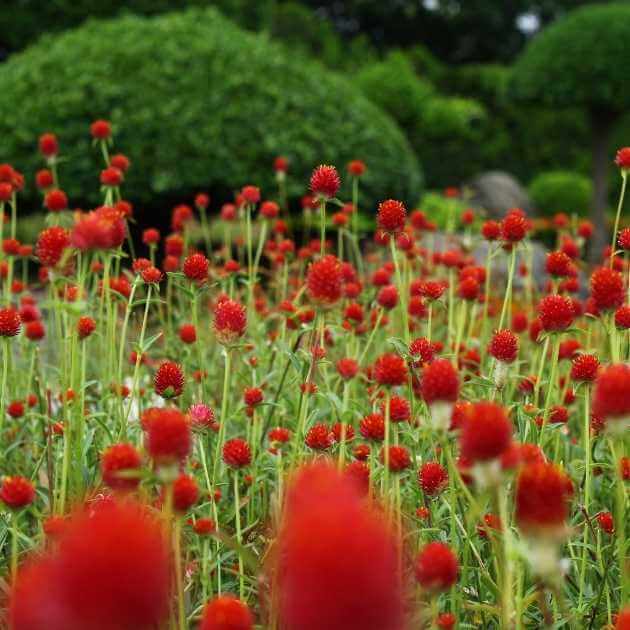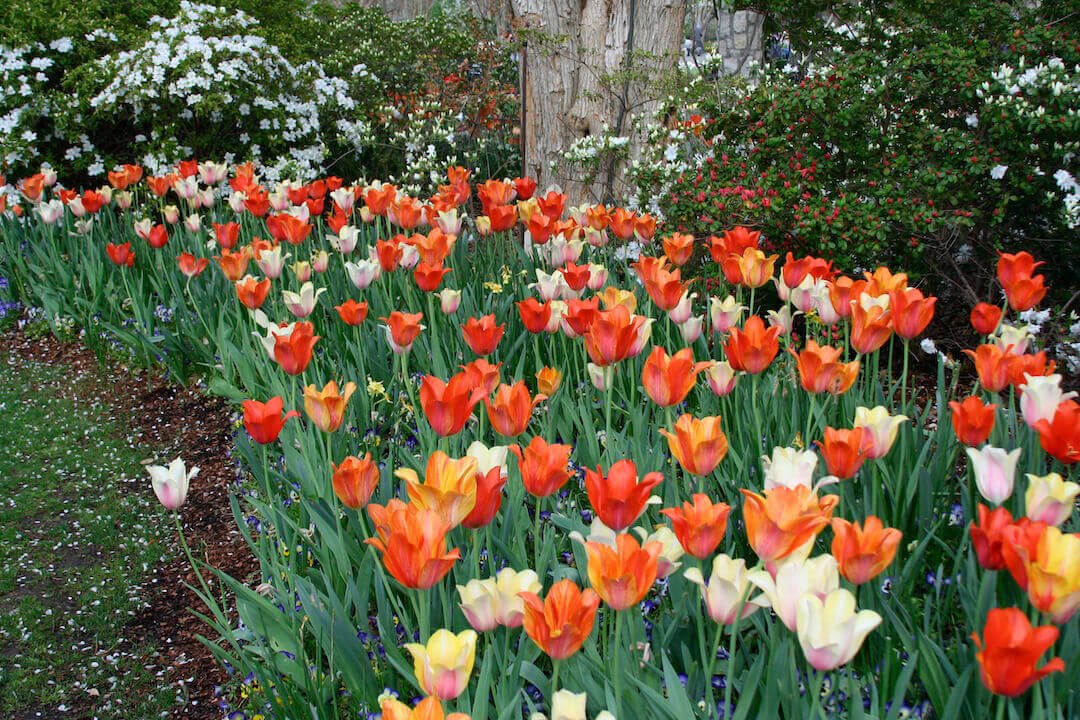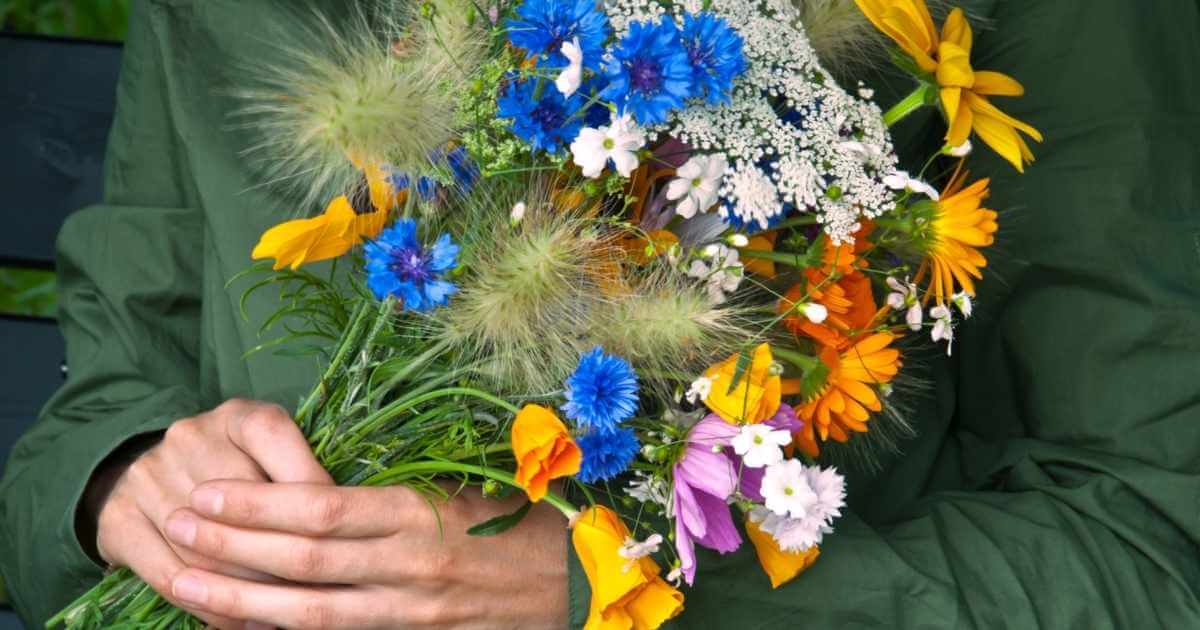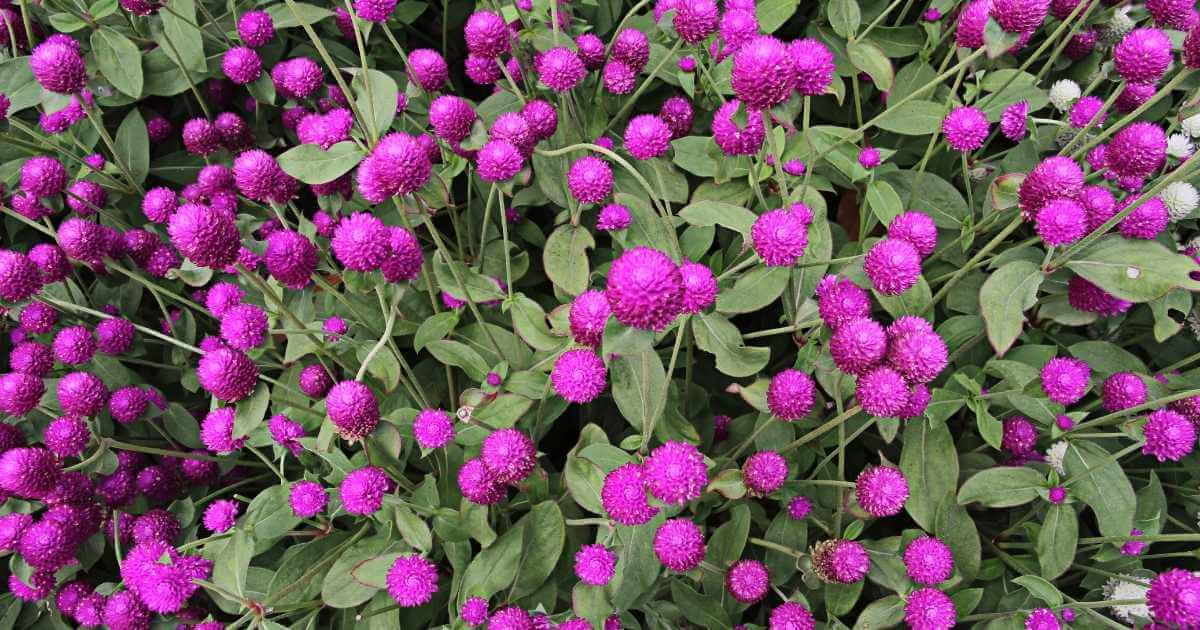
A growing awareness of the environmental impacts of the traditional cut flower industry is encouraging many sustainability-minded North Texans to grow their own
Let’s take a look at what it is and what it takes to grow gomphrena successfully from seed.
What is gomphrena?
Gomphrena (Gomphrena globosa), also known commonly as Globe Amaranth, is in the same family as amaranth and celosia and originates from Central America.
A favorite of pollinators, gomphrena is a multi-branched plant that grows to around two-feet high and is topped with globe-like florescences in shades of red, pink, purple, and white. No matter drought nor 100+ temperatures, gomphrena blooms in the Dallas-Fort Worth area from late spring through first frost earning it a well-deserved reputation as one of the toughest annual flowers for North Texas cutting gardens.
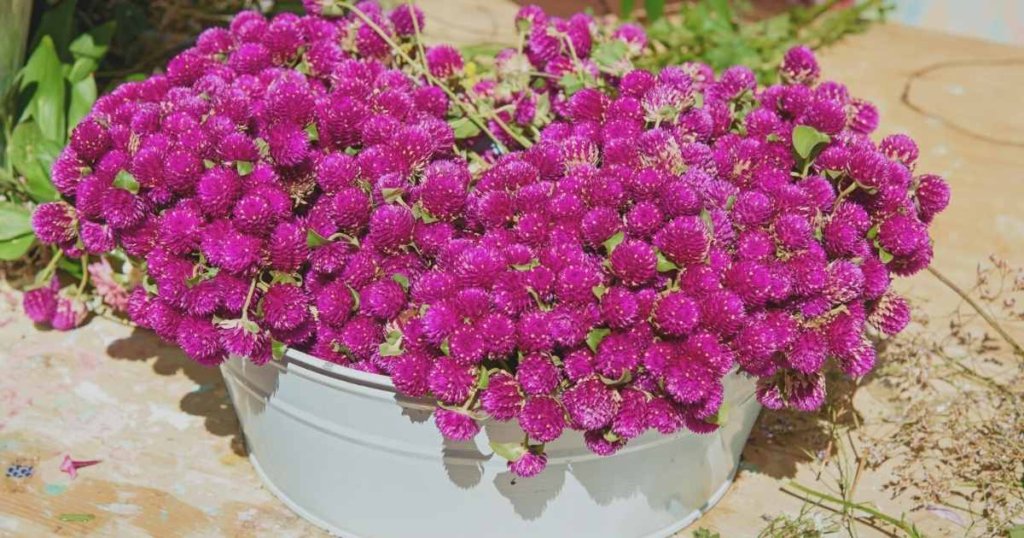
Tips for starting gomphrena by seed
Though very easy to grow once transplanted, gomphrena can be a bit finicky when started by seed. Here are some tips for seed-starting success:
1. Start seeds indoors with a heat mat
Gomphrena seeds can be direct-sown outdoors, but it is easier to start gomphrena indoors. Starting indoors gives you more control over seedling growth, but most importantly, it allows you to provide supplemental heat with a seedling heating mat. It’s also a good way to get a head start on the season.
With a
(Here are the tools that I use to start seeds indoors.)
2. Sow more than you need
No matter the seed company nor the variety, my gomphrena success rate from seed to transplant is around 25%. So, for every four seeds I sow, only one of those will make it all the way into the garden. Though this may seem really low, keep in mind that gomphrena plants will grow to be quite large in one season and bloom continuously.
Their success rate is fairly low for two reasons:
- Gomphrena has a low germination rate. It is rare that all of the gomphrena seeds I sow germinate. I believe my current average is 50-75%.
- Gomphrena seedlings grow slowly. I often start gomphrena at the same time as cosmos and marigolds, but it can take 2-3 weeks longer for the gomphrena to reach ideal transplant size. Because it grows so slowly, there is a greater risk of the seedlings dying for various reasons including overly saturated roots due to over-watering or cool temperatures.
3. Don’t pot up too quickly
Because gomphrena seedlings are slow to take off, resist the urge to pot them up too quickly or into pots that are too large. After losing several seedlings to root rot after moving them from a 72-cell tray into 3.5″ pots, I’ve had better success with 2.5″ pots. I’m also very careful to use a well-draining potting mix.
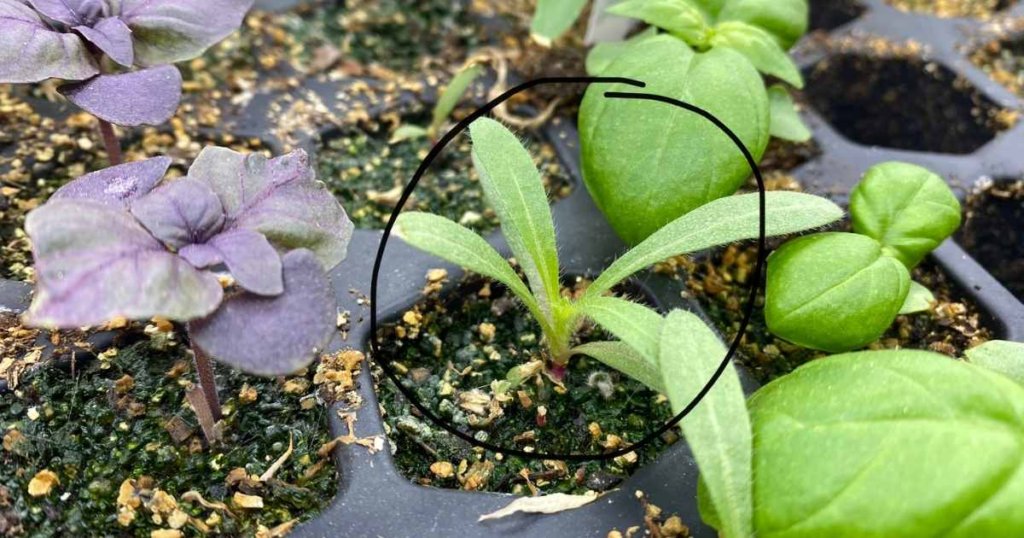
4. Hold until garden soil temperatures are ideal
As mentioned previously, gomphrena plants love the heat. That’s why they grow so well in our dry and hot North Texas summers. To prevent your gomphrenas from stagnating in the garden, hold your transplants until soils are warm enough. Soil temperatures should be at least 65 degrees before planting out. (Here is a good resource for estimating your average soil temperature.) In North Texas, soil is typically warm enough by mid-April, but best growth will begin to occur in May.
Once gomphrena is transplanted it requires very little care. It is drought and heat tolerant, and does not seem to show a preference for
When to start gomphrena in North Texas
Start gomphrena indoors 6-8 weeks before the average last frost date (March 12 is average last frost or Dallas-Fort Worth). Or wait until early April to plant gomphrena seed directly in the garden.
Commercial availability of gomphrena seeds is low relative to demand so order your gomphrena seeds as early as possible to avoid sell-outs.
Popular varieties of gomphrena
Gomphrena growing guide
| Scientific name | Gomphrena globosa |
| Plant type | Annual |
| USDA Hardiness Zone | All (as annual) |
| Sowing | Indoors, 6-8 weeks before average last frost |
| Seed depth | 1/4 inch |
| Germination temperature | 70-80 degrees |
| Days to Germination | 5-14 days |
| Soil temperature at transplanting | 65-75 degrees |
| Plant height | 1-2 feet |
| Plant spread | .75 – 1.5 feet |
| Bloom time | Late spring through fall |
| Spacing | 12-18 inches |
| Days to Maturity | 85-100 |
- Can Eating Tomatoes Help Prevent Weight Gain? New Study Says Yes - May 25, 2025
- New to Gardening? Join Our Step-by-Step Beginner Gardening Class - April 24, 2025
- Why “Intensive” Gardening is Not Good - March 9, 2025

